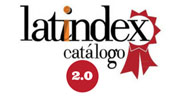Ingeniería Naturalística para prevención de riesgos en dos taludes del sur de Quito
DOI:
https://doi.org/10.29019/enfoqueute.v4n2.25Palabras clave:
Ingeniería Naturalística, taludes, riesgos, técnicas de remediación, construcciónResumen
(Recibido: 2013/11/01 - Aceptado: 2013/12/12)
La Ingeniería Naturalística es una ciencia moderna técnico-científica que combina la Ingeniería Civil, Ambiental y Geotécnica. Estudia y utiliza materiales de construcción, plantas y materiales orgánicos y sintéticos para sostener taludes. En San Luis de Chillogallo y El Recreo, sectores ubicados al sur de Quito, se han realizado obras de control de erosión, contención y recuperación ambiental con el objetivo de generar estrategias y capacidades de estimación y reducción de riesgos de desastres en dos administraciones zonales de la ciudad. Para implementar las obras se intervino el terreno, se limpió la materia orgánica e inorgánica, se removió las partes inestables de la pendiente y se remodeló a través de excusión y recolocación de tierra. Posteriormente, de acuerdo a la pendiente de cada talud se escogió y diseñó la técnica utilizada. En el sector de San Luis de Chillogallo se utilizaron las técnicas Entramado de doble pared y Entramado latino. En el sector de El Recreo se utilizaron las técnicas Emparrillado vivo y Entramado latino. Para las obras implementadas se utilizaron plantas como: aliso, Alnus glutinosa; árbol de papel, Polylepis sp.; chilca, Baccharis latifolia; lechero, Euphorbia lactiflua y tilo, Tilia platyphyllos scopoli, las cuales han tenido un rápido crecimiento y se han adaptado exitosamente a los dos taludes intervenidos.
Descargas
Descargas
Publicado
Número
Sección
Licencia
Los autores retienen todos sus derechos (© copyright).
- Los autores retienen sus derechos de marca y patente, y también sobre cualquier proceso o procedimiento descrito en el artículo.
- Los autores retienen el derecho de compartir, copiar, distribuir, ejecutar y comunicar públicamente el artículo publicado en Enfoque UTE (por ejemplo, colocarlo en un repositorio institucional o publicarlo en un libro), siempre que se dé el reconocimiento de su publicación inicial en la revista Enfoque UTE.
- Los autores retienen el derecho a hacer una posterior publicación de su trabajo, de utilizar el artículo o cualquier parte de aquel (por ejemplo: una compilación de sus trabajos, notas para conferencias, tesis, o para un libro), siempre que indiquen la fuente de publicación (autores del trabajo, revista, volumen, número y fecha).
























